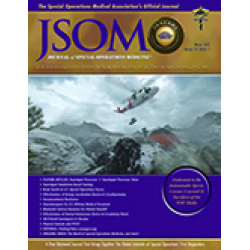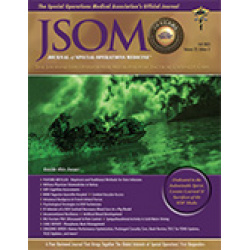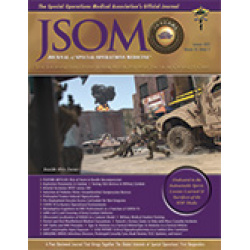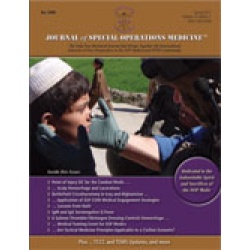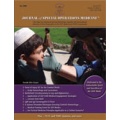Mabry RL, Frankfurt A 12(1). 17 - 23 (Journal Article)
Objective: Historical review of modern military conflicts suggests that airway compromise accounts for 1-2% of total combat fatalities. This study examines the specific intervention of pre-hospital cricothyrotomy (PC) in the military setting using the largest studies of civilian medics performing PC as historical controls. The goal of this paper is to help define optimal airway management strategies, tools and techniques for use in the military pre-hospital setting. Methods: This retrospective chart review examined all patients presenting to combat support hospitals following prehospital cricothyrotomy during combat operations in Iraq and Afghanistan during a 22-month period. A PC was determined "successful" if it was documented as functional on arrival to the hospital. All PC complications that were documented in the patients' record were also noted in the review. Results: Two thirds of the patients died. The most common injuries were caused by explosions, followed by gunshot wounds (GSW) and blunt trauma. Eighty-two percent of the casualties had injures to face, neck or head. Those injured by gunshot wounds to the head or thorax all died. The largest group of survivors had gunshot wounds to the face and/or neck (38%) followed by explosion related injury to the face, neck and head (33%). Pre-hospital cricothyrotomy was documented as successful in 68% of the cases while 26% of the PC's failed to cannulate the trachea. In 6% of cases the patient was pronounced dead on arrival without documentation of PC function. The majority of PC's (62%) were performed by combat medics at the point of injury. Physicians and physician assistants (PA) were more successful performing PC than medics with a 15% versus a 33% failure rate. Complications were not significantly different than those found in civilian PC studies, including incorrect anatomic placement, excessive bleeding, air leak and right main stem placement. Conclusions: The majority of patients who underwent PC died (66%). The largest group of survivors had gunshot wounds to the face and/or neck (38%) followed by explosion related injury to the face, neck and head (33%). Military medics have a 33% failure rate when performing this procedure compared to 15% for physicians and physician assistants. Minor complications occurred in 21% of cases. The survival rate and complication rates are similar to previous civilian studies of medics performing PC. However the failure rate for military medics is three to five times higher than comparable civilian studies. Further study is required to define the optimal equipment, technique, and training required for combat medics to master this infrequently performed but lifesaving procedure.


 English
English 